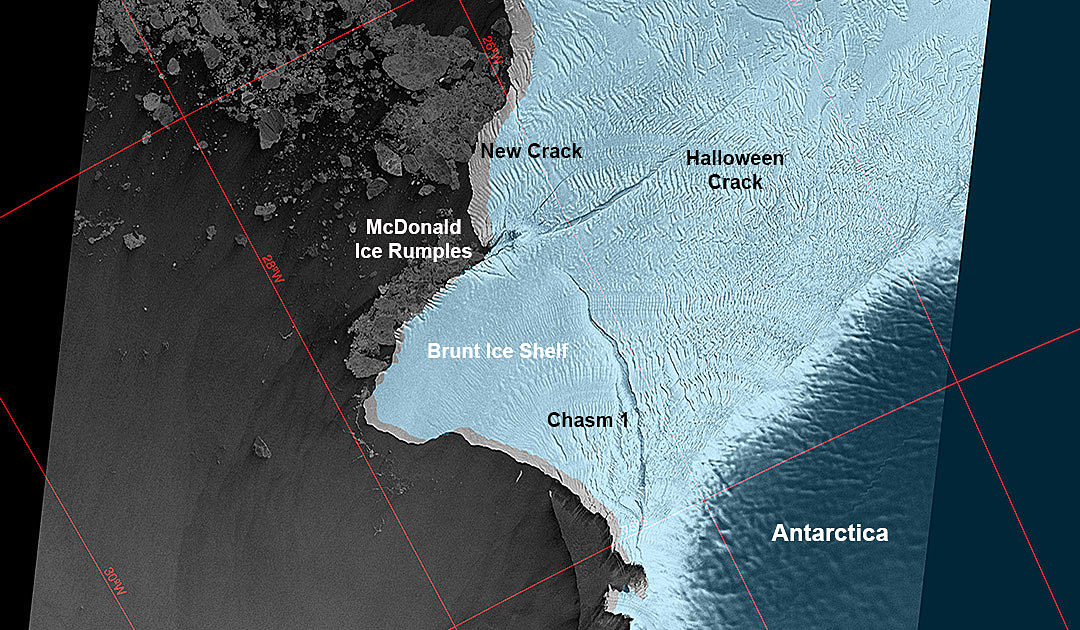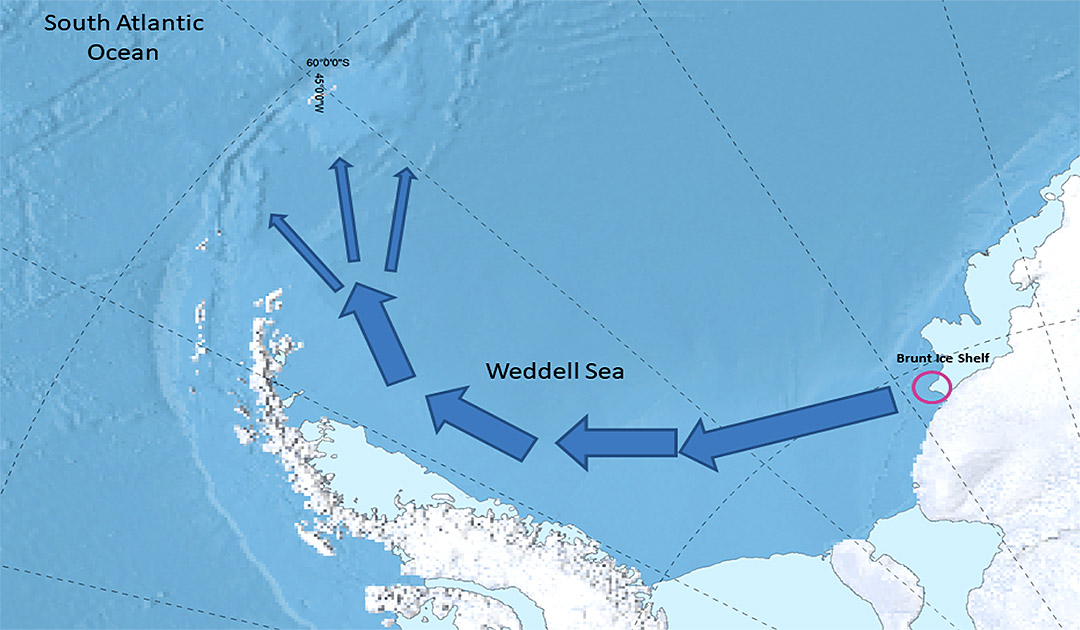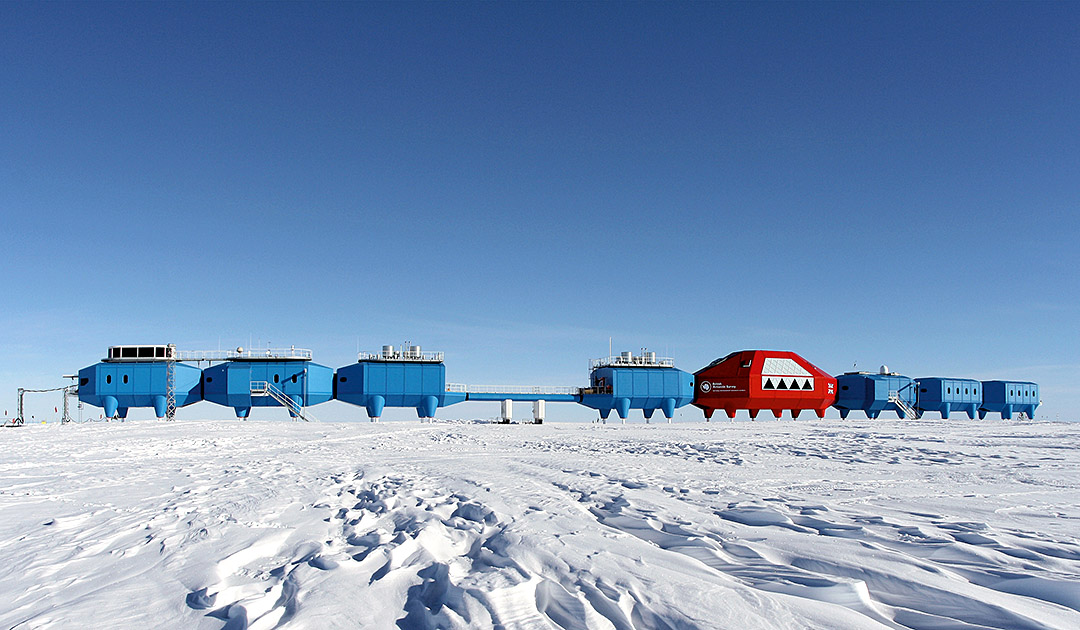
Two years ago, scientists at Britain’s Halley VI station feared that the Brunt Ice Shelf, located in their immediate vicinity, might separate from the continent. The situation soon calmed down. But the latest satellite photos from January 12, 2021, and the days following give renewed reason to believe that an iceberg the size of New York could break off. The ‘calving’ of one, possibly even two icebergs, seems inevitable. The only question is: when?

The ‘calving’ of icebergs from ice shelves is part of a natural cyclical process of growth and decay. Ice shelves are large sheets of ice. When the ice from glaciers or ice streams reaches the coast, it floats on the sea from a certain depth on. As a rule, ice shelves are between 200 and 1000 metres thick. A characteristic feature of ice shelves is that icebergs repeatedly break off at the outermost edge.
The ice shelf floating on the sea becomes thinner and thinner as it moves away from the glacier due to melting. This makes the shelf more susceptible to cracking and pieces will eventually break off. The Brunt Ice Shelf appears to be in a phase of instability, with cracks spreading across its surface.

In late October 2016, the “Halloween Crack” formed and rapidly extended eastward. In early 2019, “Chasm 1”, a crack located further south, extended as much as 4 kilometers per year to the north. Now a new crack is moving across the ice shelf north of the “Halloween crack” and much faster than the crack to the south.
The newest crack (New Crack) in the area known as the “McDonald Ice Rumples” appeared on satellite imagery back in September 2019, when it had grown a little more than 2 kilometers in length. However, the biggest growth has been recorded recently. Between November 18 and December 22, 2020, the crack grew about 20 kilometers. It formed to the north and grew another 8 kilometers by January 12, 2021.
“It’s impossible to know exactly why this new crack spread so quickly,” said Christopher Shuman, glaciologist at the University of Maryland. “It is likely that fracture dynamics near the “McDonald Ice Rumples” played a role, as they did in the rapid spread of ‘Halloween Crack’ in 2016. The unusual mixture of ice blocks and ice mix in this part of the Brunt Ice Shelf is another factor in this.”

The “McDonald Ice Rumples” is an area where the rocky seabed rises and piles up over the underside of the ice shelf. This rocky formation impedes the flow of ice and causes stresses, crevasses and cracks to form on the surface.
All of these cracks, combined with a recent acceleration of cracks in the ice shelf, have been detected by ESA’s Sentinel-1 satellite and indicate instability that is likely to produce one or two new icebergs. Only the exact time of break-off can not be predicted.

A research station has to move
The British Antarctic Survey reported in 2015 that it intended to move “Halley VI” to a new location during the 2016-2017 Antarctic summer.
Monitoring revealed that “Halley VI” was downstream of a widening crack in the ice shelf. A large crack had spread through the ice and threatened to cut the station off from the stable part of the ice shelf, prompting the decision to move.
This moved the station 23 kilometres from its previous location towards the continent. This was the first time “Halley VI” had been relocated since it was commissioned in 2012.
While the station was being relocated, new concerns arose about another crack, the “Halloween Crack.” This crack had been discovered on October 31, 2016, and BAS realized that it too could cut off the station and possibly drift to the sea. With crew evacuation all but impossible in winter, BAS announced in March 2017 that it would withdraw its staff from the base from March to October. Staff “returned” after the Antarctic winter in November 2017 and found the station in good condition. Nevertheless, it was decided to operate “Halley VI” only as a summer station until the Brunt ice shelf has stabilized.
Heiner Kubny, PolarJournal
More on the subject:





